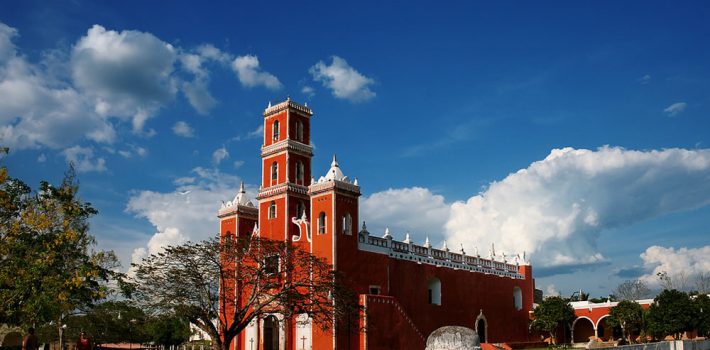Yaxcaba
It is believed that the original settlement at Yaxcaba was established by the survivors of the fall of Mayapan in 1441.
In colonial times under the encomienda system it was administered by Joachim of Leguizano (1562) and Andres Valdés.
Architecture
In the municipality seat Yaxcabá, there is St. Francis of Assisi church, the chapel dedicated to the Virgin of Guadalupe, all dating from the colonial era. There is also the Santa Cruz church, former convent and parish of St. Peter and St. Nicholas Chapel.
Yaxuna is a Mayan archaeological site, also in the municipality of Yaxcaba in central Yucatan.
The settlement had a long continuous occupation running from the Middle Formative Period through the Postclassic. The Late Formative saw the construction of a number of triadic architectural groups linked with roads running north to south. Some of the larger pyramids were remodeled during the Early Classic, and held royal tombs. In the Late Classic (ca. 600–800), the city-state of Coba conquered Yaxuna and built a 100 km Sacbe, or raised road, to connect the two cities. This was the longest the Maya ever built. Internally, new roads running east to west were constructed. In the Terminal Classic (800–1100), the state of Chichen Itza to the north began a war with the Coba state, and Yaxuna constructed a city wall, but Chichén Itzá appears to have conquered the city by around 950. Sacked and ritually destroyed, the city never recovered. By the Postclassic (1100–1697), the population was much reduced, with new construction limited to minor additions to older architecture.


Leave a Comment